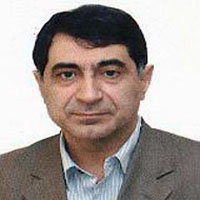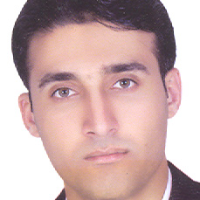Changes of cardiac IGF-1 and Akt levels in rats with myocardial infarction due to different intensities of interval training s
Cardiovascular disease is one of the leading causes of death in all countries of the world and exercise is one of the most important clinical measures for the prevention and treatment of cardiovascular disease. Therefore, the aim of this study was to explain the changes in IGF1 and cardiac Akt levels in mice with myocardial infarction
Despite advances in healthcare practices, cardiovascular disease remains the leading cause of death in all countries of the world. Among patients who survive myocardial infarction (MI), which is a direct result of cardiovascular disease, the extent of injury prevention depends on the size of the myocardium, which is destroyed by ischemic injury (infarct size). Therefore, it is believed that a significant reduction in the size of myocardial infarction reduces morbidity and subsequent mortality. Myocardial ischemia is caused by the cessation of blood flow, followed by the cessation of blood supply and nutrients to the heart muscle. These conditions cause specific physiological changes and a series of events in myocardial cells that if this process continues for a long time, the death of the heart muscle is inevitable. Therefore, any change, however small, in improving and increasing the life expectancy of heart patients can have a significant impact on promoting community health. Studies have shown that exercise is one of the most important clinical measures for the prevention and treatment of cardiovascular disease. Physical activity not only reduces cardiovascular risk factors such as diabetes and hypertension and thus helps prevent heart disease, but also seems to improve the condition and functional outcomes of patients with heart disease. It does better. Cardiovascular benefits Exercise involves several factors, including important general effects on skeletal muscle, peripheral arteries, and metabolism, as well as beneficial changes within the myocardium. In the study of exercise-related signaling pathways, it has been acknowledged that physiological hypertrophy is first achieved through insulin-like growth factor-1 (IGF-1) or the IGF-1-PI3K-Akt axis. IGF-1 is produced by the liver and to a lesser extent by the heart. Exercise also stimulates the hepatic secretion of IGF-1 into the bloodstream and stimulates cardiac expression of IGF-1. In heart tissue, IGF-1 binds to its tyrosine kinase receptor, IGF-1R, and activates the PI3K-Akt cascade. Protein serine threonine kinase (STK) is the main downstream stimulus of PI3k and is phosphorylated (activated) in physiological hypertrophy of the heart. The effects of Akt1 on the heart are numerous, though generally considered beneficial. These effects include: inhibiting cardiac myocyte death, improving calcium control, heart growth factor, and metabolism. In general, it can be stated, due to the various biological effects attributed to IGF-1 and also because of the wide therapeutic capacity for this factor and also due to the lack of research in which the expression of this factor to Along with the messaging pathway involved in physiological cardiac hypertrophy (Akt1) under the influence of various intensities of intermittent exercise, and finally due to the importance of health care in cardiovascular patients, the present study seeks to design an intermittent exercise protocol with intense Answers the question of whether the levels of IGF-1 and Akt in rats with myocardial infarction differ in different intensities of intermittent exercise after six weeks?
The present study with the code RHC.AC.IR.REC.1393.28 was approved by the Ethics Committee of Shahid Rajaei Cardiovascular Training, Research, and Treatment Center. It is fundamental-developmental in terms of purpose and experimental in terms of implementation and based on the level of supervision and degree of control, it is a type of laboratory research. In this experimental study, 55, 10-week-old male Wistar rats weighing 250 to 300 g were purchased from the Pasteur Institute of Iran. During the interventions, rats were kept in three cages in each cage with free access to water and food packages, and according to the 12-hour sleep-wake cycle at the Experimental Research Center of Shahid Rajaei Heart Hospital. The room temperature was maintained in the range of 37°C, and efforts were made to maintain and work with animals in accordance with the recommendations of the Laboratory Animal Protection Act (NIH). In the present study, Direct intervention method was used to induce MI in rats in which the left-anterior descending-coronary-artery (LAD) of rats was blocked by suture. Finally, surviving rats with MI were randomly divided into four groups (6 heads): low-intensity training (LIT), moderate-intensity training (MIT), high-intensity training (HIT), and myocardial infarction and Sham. Finally, the ELISA method was used to measure the levels of Akt and IGF1 protein. Shapiro-Wilk test was used to determine the normality of the data and one-way ANOVA and Bonferroni post hoc test at a significance level of α = 0.05 were used to analyze the hypotheses. SPSS software version 19 was used for statistical analysis.
The results showed that there was no significant difference in the levels of IGF1 and Akt proteins between the studied groups (p≥0.05).
It can be concluded that there was no difference between the effect of different intensities of Interval Training on IGF1 and Akt proteins, therefore, in order to clarify the mechanism of the effect of different intensities of Interval Training on IGF1 and Akt proteins, more studies are needed.
- حق عضویت دریافتی صرف حمایت از نشریات عضو و نگهداری، تکمیل و توسعه مگیران میشود.
- پرداخت حق اشتراک و دانلود مقالات اجازه بازنشر آن در سایر رسانههای چاپی و دیجیتال را به کاربر نمیدهد.




